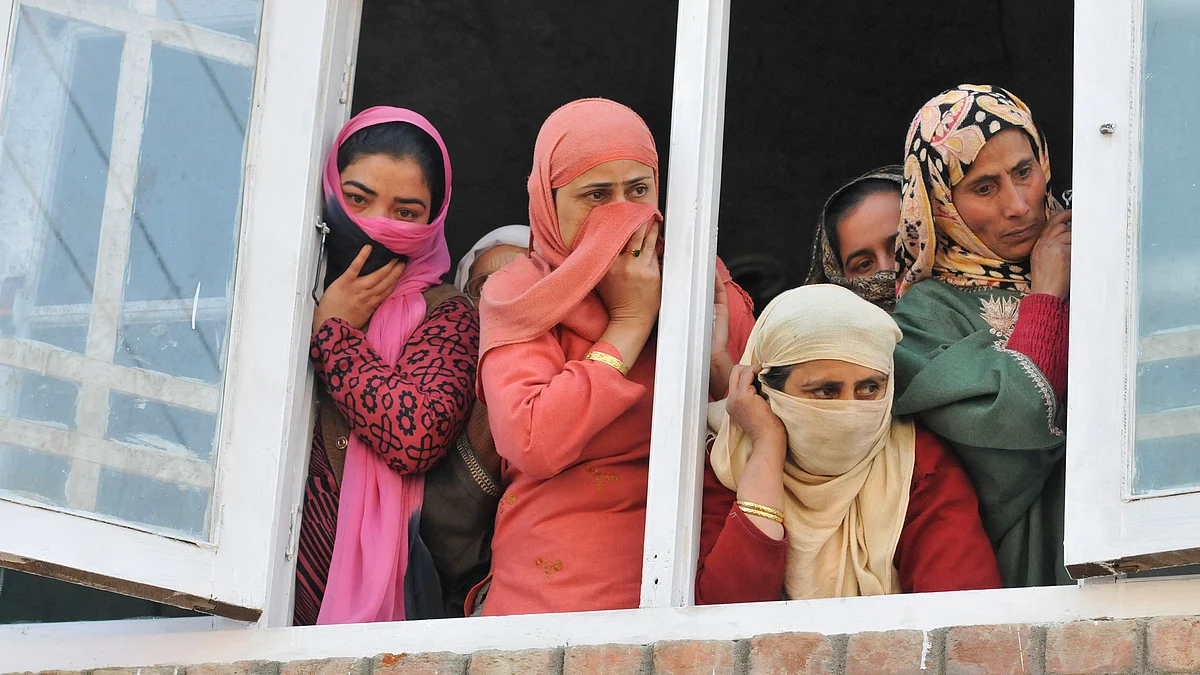How long can Delhi control Kashmir through cronies & corruption? Fresh possibilities need exploration
The political stalemate in Kashmir has lasted so long due in no small measure to reforms initiated by Sheikh Abdullah, which made subsistence living possible. But now fresh imagination is needed

The irony of the situation in Kashmir can be sensed through the fact that it dominated headlines in the last five years under the Narendra Modi regime, yet it witnessed the lowest voter turnout this year.
The cul de sac that Kashmir seems to have entered looks like it has crossed the point of no return. It has been a literal stalemate for over four decades between a growing voice for Azadi and self-determination by Kashmiri Muslims, and in response growing repression and everyday violence by the Indian state, irrespective of which political party is in power.
In open democracies, political discourse changes faster than the situation on the ground, and in conflict zone situation keeps ticking away but the political discourse is struck where it began, and therefore solutions don’t come by easily. Political discourse of Kashmir has remained, more or less the same, demanding unconditional declaration of independence and a separate nation-state. The global and national situation with regard to Kashmir has however been changing.
Globally, after the Vienna Convention on International Human Rights in 1993, it was officially recognised that the period of decolonisation is over, and there are no colonies, and self-determination no longer figured prominently anywhere in the world. Most similar struggles, such as Quebec in Canada, Tibet in China, and Nagaland in India settled the matter in favour of more autonomy and not self-determination or secession.
In a globalised world, geographical territories are being re-imagined due to the interconnectedness of the global economy. Even, spatial demands within the nation-states, such as formation of separate states do not yield many results. Recent formation of Telangana is a case in point. Neither have spate of farmer`s suicides abated, nor is the problem of unemployment been resolved. In no time, discontent is brewing in Telangana.
Global models of development are not yielding space to any alternatives; agrarian crisis and unemployment are far deeper and structural in nature for a mere change in political party to resolve the issues.
Much of the sustained and unabated struggle in Kashmir owes a lot to Sheikh Abdullah than what is today duly acknowledged. But for the land reforms he carried out, Kashmiris couldn’t have continued with their protests. It is made possible because there is no abject poverty, and subsistence living is made possible. But this has failed to address the aspirations of the youth looking for economic mobility.
Similarly, JKLF and Yasin Malik, were known to speak of socialism, which is no longer the case. Hurriyat has never had any serious discourse on model of development beyond their rhetoric of separatism. Hurriyat itself suffers from legitimacy crisis with the younger generation. In effect, there is no credible leadership in the valley that can give a meaningful direction to the growing discontent. The alternative of aligning with Pakistan is no longer an attractive option either.
Religious nationalism has managed to somewhat fill the vacuum, though the religious ethos of Kashmir does not fully comply with this kind of cultural nationalism. Even here Kashmir is struggling to find itself. On the one hand, the youth wave the ISIS flag more to prick the muscular nationalism of mainland India rather than a deep belief in the character of Islam that ISIS stands for.
Buhran Wani became a hero of the valley and a new age symbol, not only for his death but also for expressing a deep sentiment that resonates with many when he pronounced his support for Amarnath Yatra, and welcomed Pandits to settle in the valley. This yearning for cultural cohabitation cannot go with the singularity of religious nationalism.
Internally, Kashmir`s elites are in no position to lead the struggle. Like all conflict zones, be it the Northeast, or central India, Kashmir too has a corrupt elite that has grown through leakages from development packages and the largesse of the Indian state. The nexus between the political, bureaucratic and business elite in the valley is stronger than, perhaps, that even in mainland India.
The Indian State has left no stone unturned in extending patronage and controlling the situation in the valley through the crony elite. The recent spate of conflict between the local police and the militants is just an instance of the rot that lies beneath the unflinching commitment that is felt and visible to the world outside.
There are no easy alternatives but what the protest in the valley could definitely do is to open up an internal dialogue on the social content of the protests that includes the prevalent prejudices against those from the border areas of Poonch and Rajouri, against Gujjars and hill tribes, against the Muslims from Ladakh, the nature of pervasive divide between the urban and rural areas, nature of classism and racism in the valley, questions of gender and place of women, nature of institutions, model of development that could be inclusive, place for Pandits and all non-Muslim communities that are in a minority in the Valley, among other such issues. Sovereign self, while linked to the state is also deeply social in nature.
Opening up such dialogue will pave way to alternatives that we cannot imagine with precision at the moment.
Follow us on: Facebook, Twitter, Google News, Instagram
Join our official telegram channel (@nationalherald) and stay updated with the latest headlines